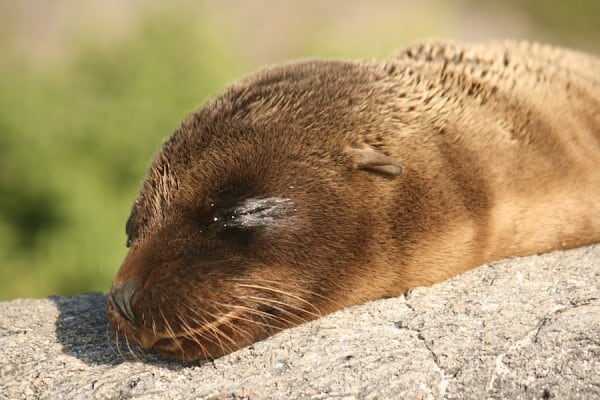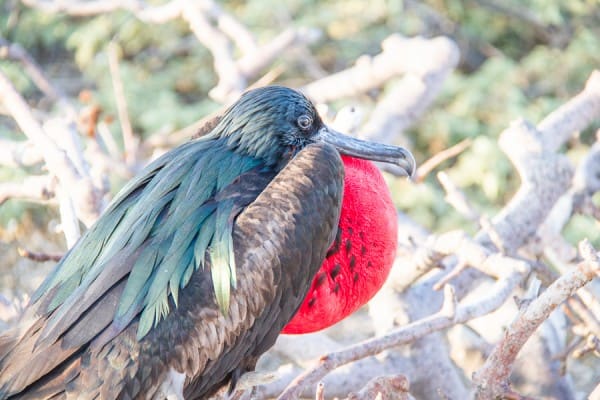The truth behind the curious name for these outstanding islands.

What do the words Galapagos mean?
Located in the Pacific Ocean, the Galapagos Islands have long captivated the imaginations of adventurers, scientists, and nature enthusiasts alike. Renowned for their unworldly landscapes and extraordinary wildlife, these remote volcanic islands have become synonymous with one of the most significant scientific discoveries in history: evolution.
But what do the words Galapagos mean? The short answer is “tortoise” but there’s more to it than that.
Let’s dive into the story behind how the Galapagos islands earned their name.
Where are the Galapagos islands?
The Galapagos Islands are a group of volcanic islands located in the Pacific Ocean, approximately 620 miles (1,000 kilometers) off the coast of Ecuador in South America. The archipelago consists of 13 major islands, six smaller islands, and over 40 islets.
As part of this post, we will also discuss Galapagos trip cost, how to get there, which islands to visit, traditional dishes to taste, and outdoor activities to explore.
Get Your Facts Straight
The Galapagos Islands are renowned for their biological diversity, which played a pivotal role in the formulation of Charles Darwin’s theory of evolution. Darwin’s visit to the archipelago in 1835 was a transformative experience, as he observed distinct variations in the finches, tortoises, and other species on different islands.
These observations laid the groundwork for his revolutionary theory of natural selection.
The Origin of the Name “Galapagos”
The name “Galapagos” traces its roots back to the Spanish colonial era. It’s derived from the old Spanish word “galápago,” meaning tortoise. The islands were eloquently named due to the abundant giant tortoises in the region and their historical presence in this destination. These colossal creatures, known for their longevity and distinctive shell structures, have become iconic symbols of the Galapagos.
Nowadays, the name “Galapagos” has become synonymous with a living laboratory of evolution and serves as a reminder of the groundbreaking discoveries made by Charles Darwin during his visit to the islands.
Back in the past, the Spanish explorers and sailors who discovered the archipelago in the 16th century were struck by the presence of these massive reptiles, which were unlike anything they had encountered before. The Galapagos tortoises are known for their large size, with some weighing over 500 pounds (227 kilograms) and having a lifespan of over 100 years. They played a vital role in shaping the understanding of the islands and their distinct ecosystem.
It is important to note that the name “Galapagos” is also a plural form, as it refers to the entire archipelago rather than just a single island.

The Wildlife
The Galapagos Islands are famous for their incredible biodiversity. Many species found in the Galapagos are unique to the islands and cannot be found anywhere else on earth.
These islands are home to numerous endemic species, including the Galapagos giant tortoise, marine iguana, Galapagos penguin, and the flightless cormorant. These unique species have evolved in isolation and adapted to the islands’ specific environmental features.
Giant tortoises, the iconic symbol of the Galapagos, can be found roaming the islands, slow and stately. Marine iguanas, the only seafaring lizards in the world, can be seen relaxing in the sun or diving into crystal-clear waters to feed on algae.
Galapagos penguins, the smallest species of penguins, roam along the rocky shores, while flightless cormorants display their remarkable adaptations for diving. Darwin’s finches, with their varied beak sizes and shapes, illustrate the adaptive changes that led to the formation of different species.
Other notable wildlife includes sea lions, blue-footed boobies, waved albatrosses, and Galapagos sharks, among others.
How to Arrange a Trip to Galapagos
A trip to the Galapagos Islands is a dream for many nature enthusiasts and adventure seekers. To make the most of your experience, careful planning and preparation are essential. Here’s a guide to help you arrange a memorable trip to the Galapagos.
What to Visit
The Galapagos Islands offer various itineraries, ranging from day trips to multi-day cruises or island-hopping tours. Popular highlights include Santa Cruz Island, Isabela Island, Bartolome Island, and Española Island. Research different itineraries to find the one that aligns with your interests and time constraints.
For instance, you can consider visiting Santa Cruz Island and its diverse wildlife, the Charles Darwin Research Station, or Isabela Island and its volcanic landscapes and marine life. There is also Bartolome Island, with its iconic Pinnacle Rock and a range of exciting snorkeling opportunities. These islands offer a well-rounded Galapagos experience.
How to Pack
Pack light, and wear breathable clothing suitable for warm and humid weather. Don’t forget the essentials such as a hat, sunscreen, insect repellent, comfortable walking shoes, and a waterproof bag for your belongings. Also, pack binoculars; you will need them to observe the wildlife! Don’t forget your camera with extra batteries and a reusable water bottle. This article on what to wear in the Amazon actually has plenty of practical tips for the Galapagos as well.
The Cost
The cost of a trip to the Galapagos can vary depending on multiple factors such as accommodation, transportation, activities, and the length of your stay. On average, a seven-day cruise can cost between $3,000 to $6,000 per person, while land-based tours are typically more affordable.
Start Planning
Now that you’re more familiar with the origins of the name of this astonishing archipelago and learned more about the accompanying travel logistics, it’s time to start planning your trip. Be sure to take into consideration all of the above when choosing an agency and booking a trip to a distant destination like Galapagos.
By carefully arranging your trip, choosing the right itineraries, selecting a reputable agency, and packing accordingly, you can embark on a journey to this unique paradise with total peace of mind. Remember to respect and protect the fragile ecosystem, follow guidelines, and immerse yourself in the extraordinary biodiversity that inspired Charles Darwin’s groundbreaking theories.
More about Ecuador
- The oldest market in Quito and what to buy in Ecuador
- Why the pre-Colombian art in Quito matters
- Why everyone should visit the cloud forests of Ecuador
